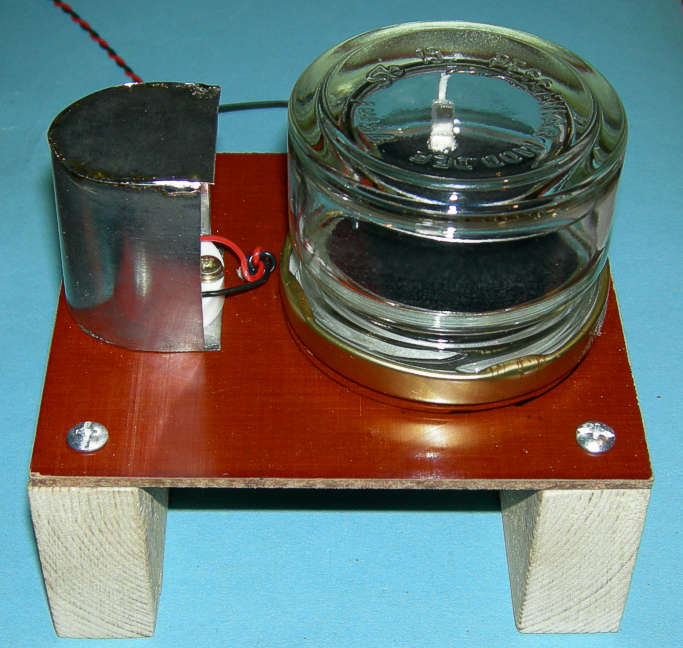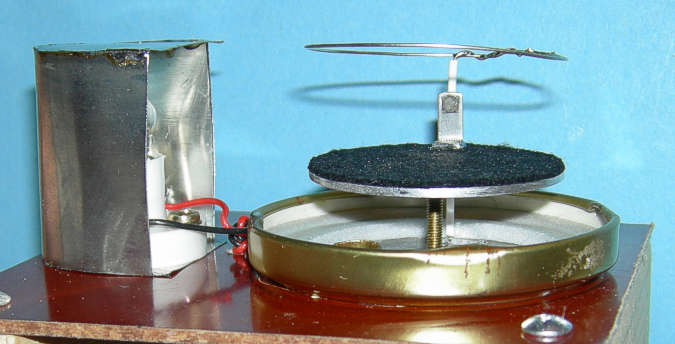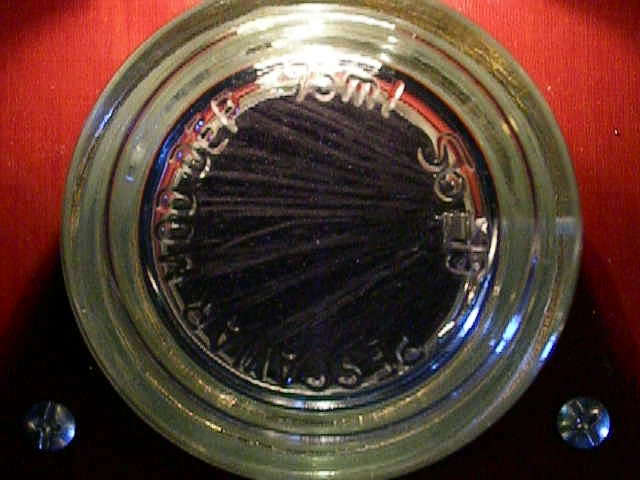

| Experiments Menu | Teralab Main Menu |
|---|
Cloud chambers are used to visualize the paths taken by ionizing particles. The most common type of cloud chamber found in schools and colleges is the diffusion cloud chamber. The diffusion cloud chamber operates continuously and is impressive to watch, but has the disadvantage of requiring dry-ice, which can be a problem to obtain.
The first type of cloud chamber was actually an expansion chamber. It was invented by Charles Wilson and is therefore often referred to as a Wilson cloud chamber. A distinct advantage of the Wilson cloud chamber is that it does not require dry ice for operation. However it does have the disadvantage that it is transient in operation. It shows a snap-shot of the tracks and in its simple form, can only be operated about twice a minute. It is also a little more complicated and requires a high voltage 'clearing field'.
An Wilson cloud chamber works by saturating the air in a chamber with water vapour or isopropyl alcohol vapour. The pressure in the chamber is then suddenly dropped, causing super-saturation. Cloud will then form wherever there are electric charges. The chamber is cleared of unwanted charges by an electrostatic clearing field. Cloud then forms on the tracks of charge recently left by ionizing particles.

The expansion cloud chamber shown above was made out of odds-and-ends over a weekend.
On the left is a lamp to make the tracks easier to see. On the right is the expansion
chamber, made from a caviar jar. The following materials were used:
A empty caviar jar.
A sheet of Tufnol.
Two bits of wood.
An aluminium disc.
A small piece of black felt.
A few screws.
Some thin steel sheet for the lamp housing.
A torch bulb and holder.
Some wire.
A length of rubber hose (not in photo).
A 50ml plastic syringe (not in photo).
An Am241 alpha source.

The above graphic shows the construction of the expansion chamber. The metal platform is connected to 150V to produce an electrostatic field between the platform and the grounded wire loop at the top of the chamber. This 'clearing field' sweeps charges away and is essential to the operation of the chamber.
The source is an americium alpha emitter, removed from an old smoke alarm. I don't recommend that you take a smoke alarm apart. However, the range of alpha particles in air is only about 5cm and so as long as the source is handled with a pair of tweezers or pliers, it is reasonably safe. It must also be kept in a clearly labeled container and not left lying around. The source must be mounted the correct way round. The active material is only on one side.

In the above photograph, the jar is removed, making the construction easier to see. The jar lid is glued to the Tufnol board. The wire loop is soldered to the inside of the jar lid. The vertical wire is insulated with PTFE sleeve, to prevent it shorting to the platform. The top of the platform is covered with black felt. This improves the contrast of the particle tracks and also provides an absorbent material to hold the isopropyl alcohol. The source is glued to a small 'L' that is glued to the platform. There is a ring of foam inside the lid to ensure an air-tight seal.
To operate the chamber, the felt is made wet with isopropyl alcohol and the jar is fitted in place with the plunger of the syringe fully depressed. The chamber is then left to saturate with alcohol vapour for a few minutes. The light and clearing field are then switched on. The plunger of the syringe is abruptly withdrawn, dropping the pressure and super-saturating the air. Alcohol droplets then form along the paths taken by the alpha particles.

The photograph above is of a typical expansion. The results are quite good, considering the crudity of the equipment. The alpha source is on the right. The tracks are displaced from the original paths taken by the air flow during the expansion. The tracks only last for a fraction of a second. I obtained photographs by recording video and then converting it to individual frames. The expansions can be repeated about twice a minute. Note the bent track just left of centre. This is possibly a collision.
| Experiments Menu | Teralab Main Menu |
|---|